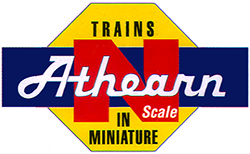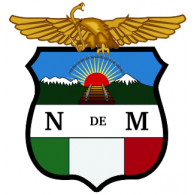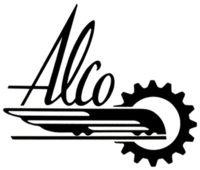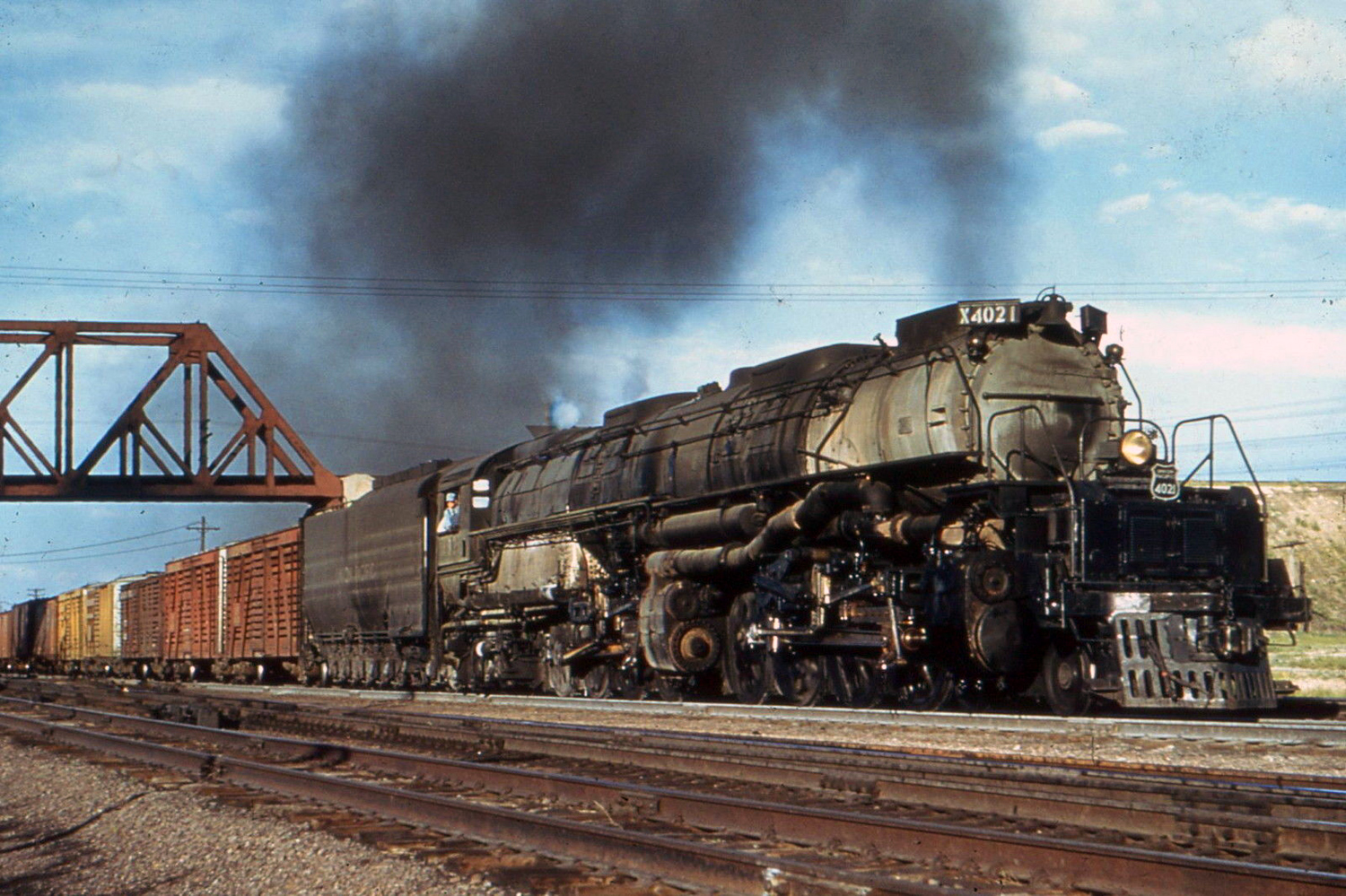Specific Item Information: Ferrocarriles Nacionales de México, Mexico’s state-owned railroad from 1938 to 1998, was somewhat famous for acquiring second-hand locos from the US- and operating them long after they had been retired beyond the border. In 1962, they were able to pick up several Big Boy locos from the UP. After a conversion to oil in the San Luis Potosi shops, the ALCO giants gave many more years of good service to the road. * Oil Burner, no cooling pipes. SoundTraxxTsunami2sound
Model Information: As of 2016, this model has been produced in four (4) runs, released in 2008, 2009, 2013 and 2016.
Starting with the second run, some models have been offered with smoke deflectors.
Starting with the third run, some models have been offered with oil tender instead of coal tender.
Key Features:
Starting with the second run, some models have been offered with smoke deflectors.
Starting with the third run, some models have been offered with oil tender instead of coal tender.
Key Features:
- Boiler backhead with full detailing
- Individually applied piping, valves, generators, etc.
- Correctly operating eccentric cranks
- Headlights and number boards with directional light change
- Tender light
- Five pole skewed armature motor with dual flywheels
- Pivoting front and rear engines for negotiating 11" radius curves - 15" radius recommended
- Factory installed onboard sound and DCC decoder
- Hand held remote control for DC operation
- Blackened metal wheels suitable for operation on Code 55 track
- MicroTrains operating knuckle couplers installed
DCC Information: The two first runs (2008 and 2009) are factory-equipped with a MRC sound decoder, that came together with a hand-held remote control for analog operation.
The subsequent runs (2013 and 2016) are factory-equipped with a Soundtraxx Tsunami sound decoder.
In the 2016 run, two models are proposed without decoder, but DCC ready.
The subsequent runs (2013 and 2016) are factory-equipped with a Soundtraxx Tsunami sound decoder.
In the 2016 run, two models are proposed without decoder, but DCC ready.
Prototype History: Big Boy is the popular name of the American Locomotive Company 4000-class 4-8-8-4 articulated, coal-fired, steam locomotives manufactured between 1941 and 1944 and operated by the Union Pacific Railroad until 1959.
The Big Boy fleet of twenty five locomotives were used primarily in the Wyoming Division to haul freight over the Wasatch mountains between Green River, Wyoming and Ogden, Utah. They were the only locomotives to use a 4-8-8-4 wheel arrangement consisting of a four-wheel leading truck for stability entering curves, two sets of eight driving wheels and a four-wheel trailing truck to support the large firebox.
According to Union Pacific senior manager of Heritage Operations Ed Dickens Jr., the 4-8-8-4 series originally was to have been called "Wasatch". One day while one of the engines was being built an unknown worker scrawled "Big Boy" in chalk on its front. With that, the legendary name was born and has stuck ever since.
Read more on Wikipedia and on SteamLocomotive.com.
The Big Boy fleet of twenty five locomotives were used primarily in the Wyoming Division to haul freight over the Wasatch mountains between Green River, Wyoming and Ogden, Utah. They were the only locomotives to use a 4-8-8-4 wheel arrangement consisting of a four-wheel leading truck for stability entering curves, two sets of eight driving wheels and a four-wheel trailing truck to support the large firebox.
According to Union Pacific senior manager of Heritage Operations Ed Dickens Jr., the 4-8-8-4 series originally was to have been called "Wasatch". One day while one of the engines was being built an unknown worker scrawled "Big Boy" in chalk on its front. With that, the legendary name was born and has stuck ever since.
Read more on Wikipedia and on SteamLocomotive.com.
Road Name History: Ferrocarriles Nacionales de México, (known as N de M originally, and FNM from 1987 to present) was Mexico's state owned railroad company from 1938 to 1998, and prior to 1938 (dating from the regime of Porfirio Diaz) a major railroad controlled by the government that linked Mexico City to the major cities of Nuevo Laredo and Ciudad Juarez on the U.S. border. The first trains to Nuevo Laredo from Mexico City began operating in 1903.
N de M absorbed the Mexican Central Railroad (Ferrocarril Central Mexicano, first section from Mexico City to Leon, Guanajuato, opened in 1882) in 1909, thus acquiring a second border gateway at Ciudad Juarez (adjacent to El Paso, Texas). The N de M was nationalized by President Lazaro Cardenas del Rio in 1938, and privatized 60 years later by President Ernesto Zedillo. N de M operated most railway trackage through the central and northeastern regions of the republic.
In 1995, the Mexican government announced that the FNM would be privatized and divided into four main systems. As part of the restructuring for privatization, FNM suspended passenger rail service in 1997, and the new arrangements applied from 1998. The companies were Kansas City Southern de Mexico, Ferromex, Ferrosur, and (owned jointly by the three companies) Ferrocarril y Terminal del Valle de Mexico or Ferrovalle which operates railroads and terminals in and around Mexico City.
As of 2006, the remaining parts of NdeM are in the process of liquidation.
N de M absorbed the Mexican Central Railroad (Ferrocarril Central Mexicano, first section from Mexico City to Leon, Guanajuato, opened in 1882) in 1909, thus acquiring a second border gateway at Ciudad Juarez (adjacent to El Paso, Texas). The N de M was nationalized by President Lazaro Cardenas del Rio in 1938, and privatized 60 years later by President Ernesto Zedillo. N de M operated most railway trackage through the central and northeastern regions of the republic.
In 1995, the Mexican government announced that the FNM would be privatized and divided into four main systems. As part of the restructuring for privatization, FNM suspended passenger rail service in 1997, and the new arrangements applied from 1998. The companies were Kansas City Southern de Mexico, Ferromex, Ferrosur, and (owned jointly by the three companies) Ferrocarril y Terminal del Valle de Mexico or Ferrovalle which operates railroads and terminals in and around Mexico City.
As of 2006, the remaining parts of NdeM are in the process of liquidation.
Brand/Importer Information: Athearn's history began in 1938, when its founder-to-be, Irvin Athearn, started an elaborate O scale layout in his mother's house. After placing an ad selling the layout, and receiving much response to it, Irv decided that selling model railroads would be a good living. He sold train products out of his mother's house through most of the 1940s. After becoming a full-time retailer in 1946, Irv opened a separate facility in Hawthorne, California in 1948, and that same year he branched into HO scale models for the first time.
Athearn acquired the Globe Models product line and improved upon it, introducing a comprehensive array of locomotive, passenger and freight car models. Improvements included all-wheel drive and electrical contact. One innovation was the "Hi-Fi" drive mechanism, employing small rubber bands to transfer motion from the motor spindle to the axles. Another was the double-ended ring magnet motor, which permitted easy connection to all-wheel-drive assemblies. Athearn was also able to incorporate flywheels into double-ended drives.
The company produced a model of the Boston & Maine P4 class Pacific steam locomotive which incorporated a cast zinc alloy base and thermoplastic resin superstructure. It had a worm drive and all power pickup was through the bipolar trucks that carried the tender. This item was discontinued after the Wilson motor was no longer available, and was not redesigned for a more technologically advanced motor.
Athearn's car fleet included shorter-than-scale interpretations of passenger cars of Southern Pacific and Atchison, Topeka & Santa Fe Railroad prototypes. The company also offered a variety of scale-length freight cars with sprung and equalized trucks. The cars could be obtained in simple kit form, or ready-to-run in windowed display boxes. The comprehensive scope of the product line contributed to the popularity of HO as a model railroad scale, due to the ready availability of items and their low cost.
Irv Athearn died in 1991. New owners took control in 1994, but continued to follow Athearn's commitment to high-quality products at reasonable prices. Athearn was bought in 2004 by Horizon Hobby. Athearn was then moved from its facility in Compton to a new facility in Carson, California. In mid-2009, all remaining US production was moved to China and warehousing moved to parent Horizon Hobby. Sales and product development was relocated to a smaller facility in Long Beach, California.
Read more on Wikipedia and Athearn website.
Athearn acquired the Globe Models product line and improved upon it, introducing a comprehensive array of locomotive, passenger and freight car models. Improvements included all-wheel drive and electrical contact. One innovation was the "Hi-Fi" drive mechanism, employing small rubber bands to transfer motion from the motor spindle to the axles. Another was the double-ended ring magnet motor, which permitted easy connection to all-wheel-drive assemblies. Athearn was also able to incorporate flywheels into double-ended drives.
The company produced a model of the Boston & Maine P4 class Pacific steam locomotive which incorporated a cast zinc alloy base and thermoplastic resin superstructure. It had a worm drive and all power pickup was through the bipolar trucks that carried the tender. This item was discontinued after the Wilson motor was no longer available, and was not redesigned for a more technologically advanced motor.
Athearn's car fleet included shorter-than-scale interpretations of passenger cars of Southern Pacific and Atchison, Topeka & Santa Fe Railroad prototypes. The company also offered a variety of scale-length freight cars with sprung and equalized trucks. The cars could be obtained in simple kit form, or ready-to-run in windowed display boxes. The comprehensive scope of the product line contributed to the popularity of HO as a model railroad scale, due to the ready availability of items and their low cost.
Irv Athearn died in 1991. New owners took control in 1994, but continued to follow Athearn's commitment to high-quality products at reasonable prices. Athearn was bought in 2004 by Horizon Hobby. Athearn was then moved from its facility in Compton to a new facility in Carson, California. In mid-2009, all remaining US production was moved to China and warehousing moved to parent Horizon Hobby. Sales and product development was relocated to a smaller facility in Long Beach, California.
Read more on Wikipedia and Athearn website.
Item created by: CNW400 on 2024-12-27 17:12:35. Last edited by CNW400 on 2024-12-27 17:12:36
If you see errors or missing data in this entry, please feel free to log in and edit it. Anyone with a Gmail account can log in instantly.
If you see errors or missing data in this entry, please feel free to log in and edit it. Anyone with a Gmail account can log in instantly.






